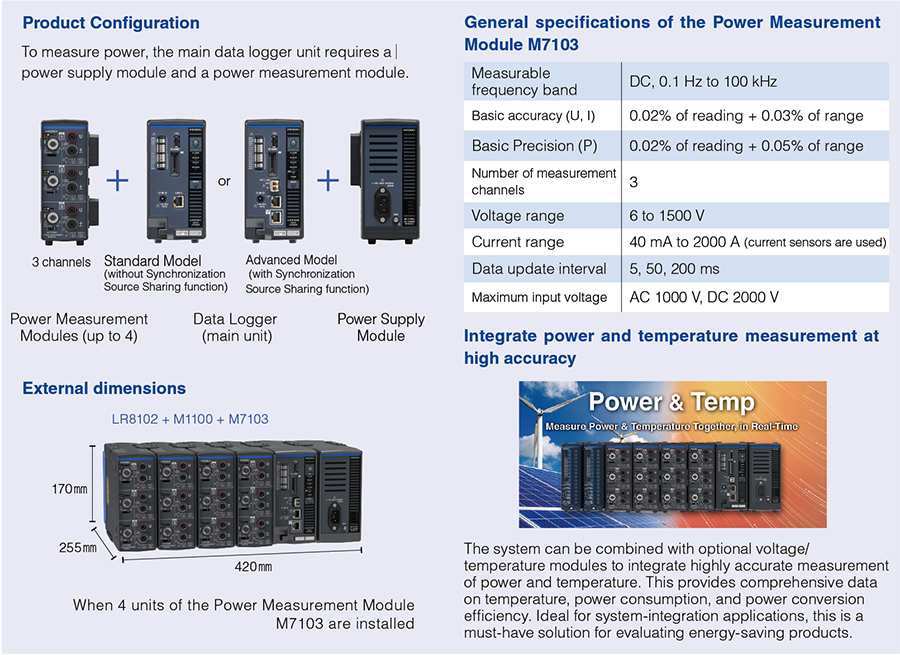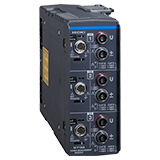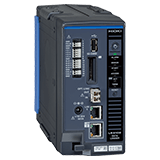Highly stable evaluation of multi-MPPT inverter conversion efficiency
Introduction
Maximizing the amount of electricity generated by photovoltaic (PV) systems is critical for owners of the systems as well as those installing them. Because the energy produced by PV modules is rife with variability, the power generation must be monitored and controlled to maximize it at all times. This is the job of Maximum Power Point Tracking (MPPT) inverters.
This application note shows how the Hioki M7103's Synchronization Source Sharing Function is particularly useful in measuring the power conversion efficiency of multiple MPPT inverters (a.k.a. string inverters).

Challenge
As the capacity of PV inverters increases, the number of DC input strings also increases. This means that many power meters must be used to measure and calculate the power conversion efficiency of all strings. However, it is difficult to align the calculation interval between each power meter, making it impossible to measure efficiency in a stable manner. As a result, it is not rare for evaluation of high-efficiency inverters to render practically impossible efficiency exceeding 100%. This is a very concerning situation, given that accurate and stable measurement of efficiency is essential for improving the quality and reliability of PV inverters.
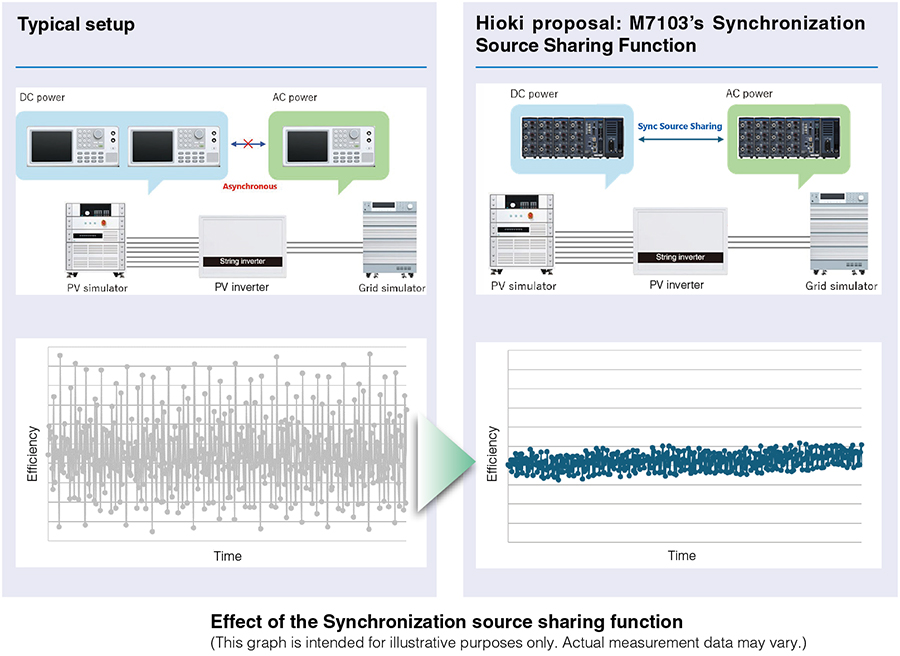
What to know about power measurement
Update-timing of power meters
When a power meter’s synchronization source is set to AC current or AC voltage instead of DC, the update (and calculation of power, efficiency, etc.,) happens at each of the device’s data update timings that occur after one or more complete waveform periods of the synchronization source. If a full period cannot be detected within the data update interval, the measured value is not updated.
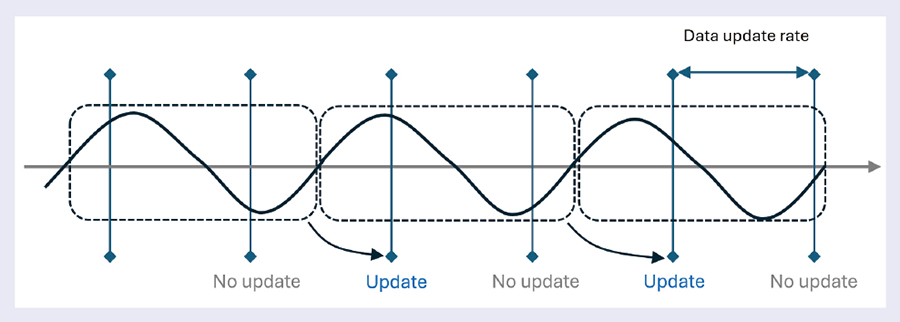
When the synchronization source is set to DC, the value is always updated at the power meter’s data update timing, and it calculates using the waveform that results between each data update.
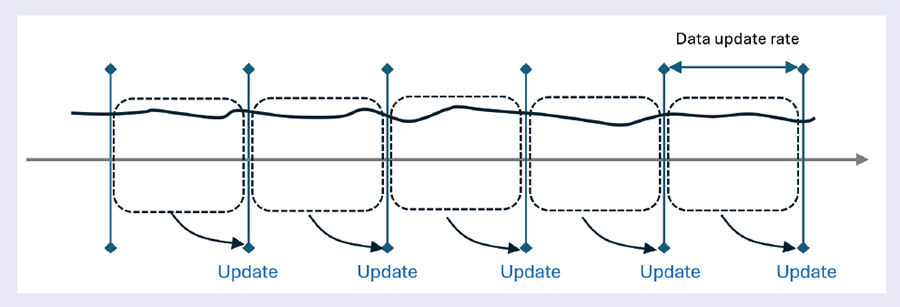
Users can set the synchronization source (AC current, AC voltage or DC) from the power meter’s settings.
Causes of unstable efficiency values
When multiple power meters are used, however, the power is measured, and efficiency is calculated at the data update timing of each meter. This creates variation in measured values between power analyzers, making it impossible to obtain stable efficiency values. Therefore, it is important to align the data update timing of each power meter. However, there are cases in which aligning data update timing alone is not sufficient. The reasons for this are explained below.
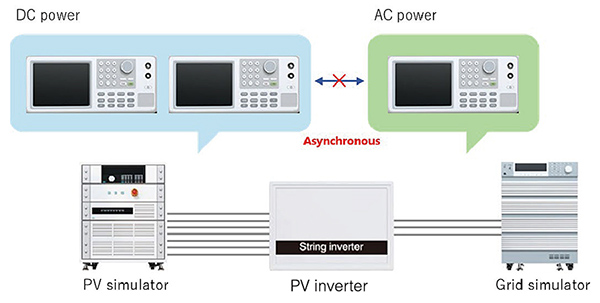
When a power meter’s synchronization source is set to AC current or voltage, the AC power is calculated from the waveform extracted from between zero-crossing timings that result in one or more periods as shown in the figure below. The measurement values are updated at the next data update timing. When there is a DC synchronization source, the DC power is simply calculated from the waveform within the data update interval, and the measurement values are updated at each data update timing.
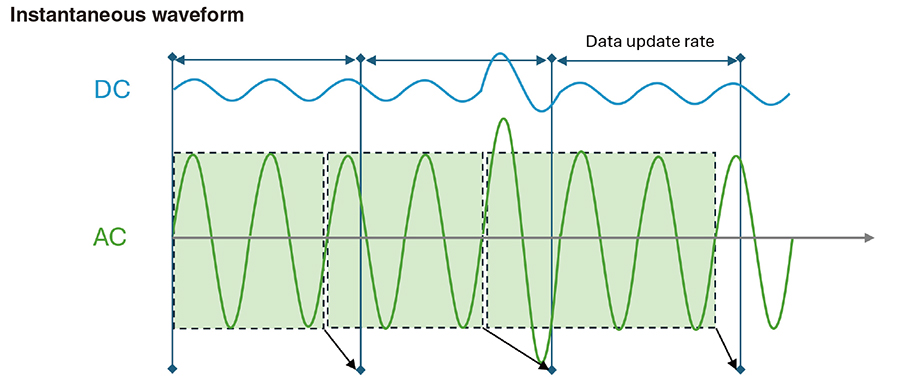
In the waveform above, both the DC and AC waveforms momentarily fluctuate. However, this momentary fluctuation is calculated from different time periods. Even though data is updated at the same time, this difference results in the efficiency exceeding 100%. Thus, simply aligning the data update timing is not enough to accurately and stably measure efficiency.
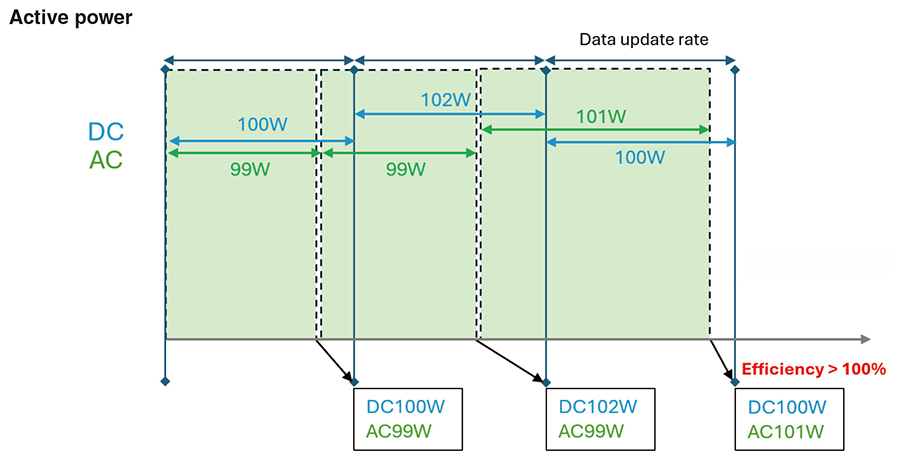
NEW Synchronization source sharing function
The Synchronization Source Sharing function was developed to solve this issue. When the Synchronization Source Sharing function is used to synchronize the calculation interval between each power meter, the calculation intervals for DC and AC power are matched. As a result, efficiency can be accurately and stably measured.
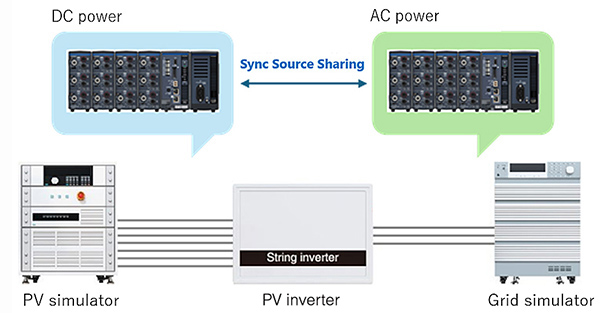
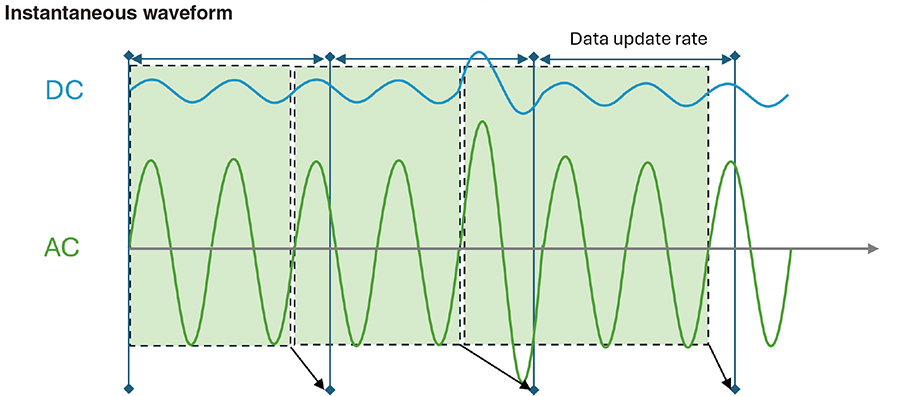
By using the Synchronization source sharing function, even in the case of instantaneous waveform fluctuations, both the DC and AC power can be calculated from the same time period, so the efficiency never exceeds 100%.
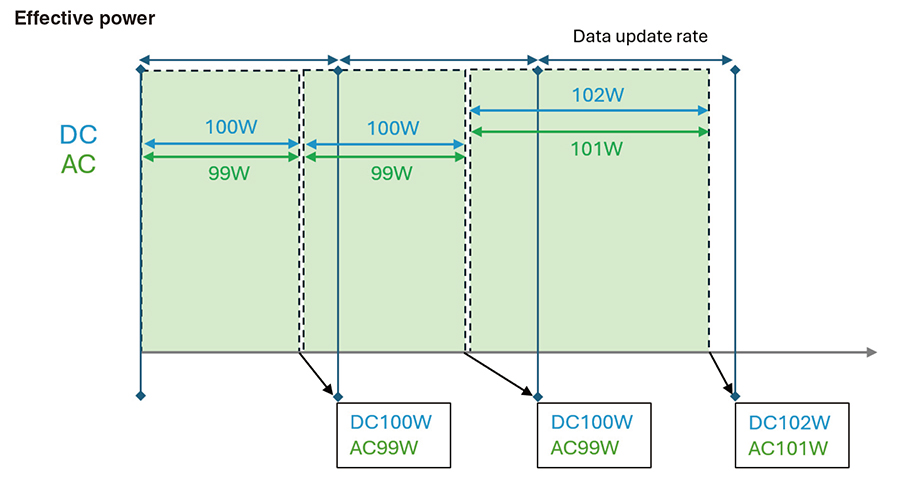
Synchronization Source Sharing function application example
The M7103's Synchronization Source Sharing Function’s stable power measurement especially shines in scenarios where two or more power meters are required. It provides an ideal solution for applications where multi-point power measurement is required, such as multi-MPPT inverters.

